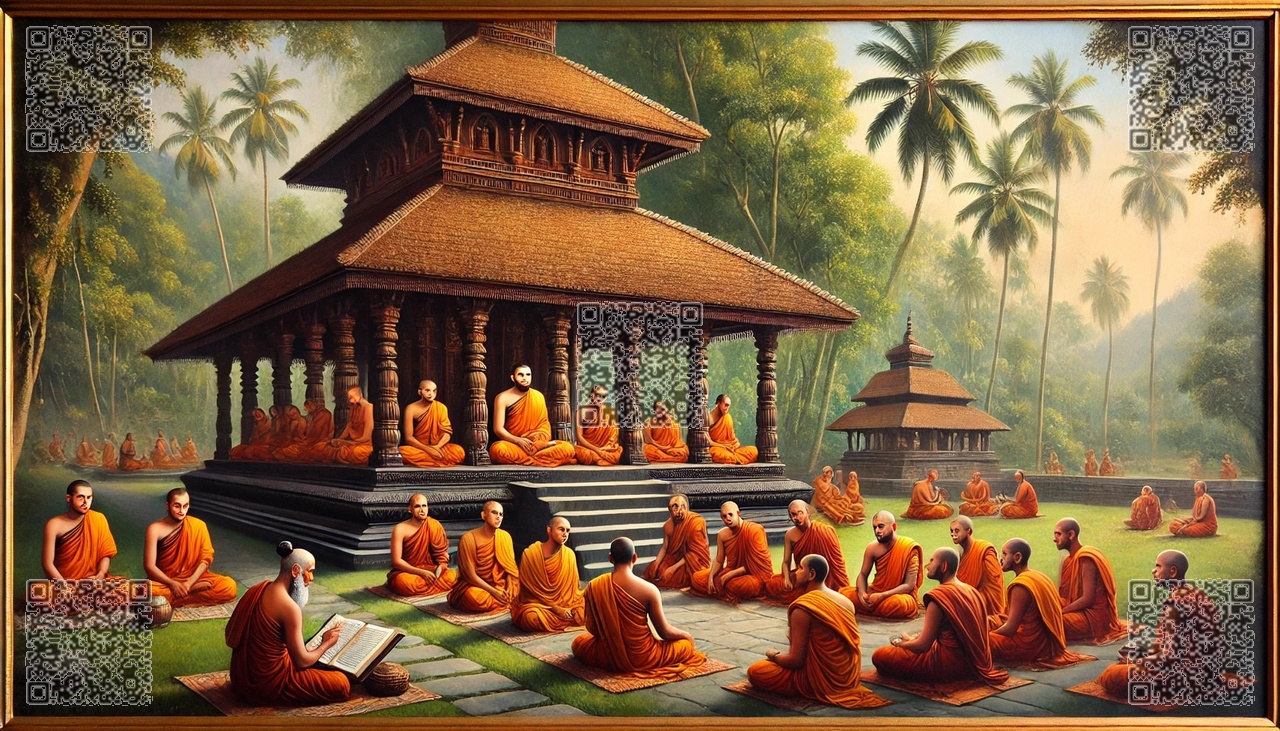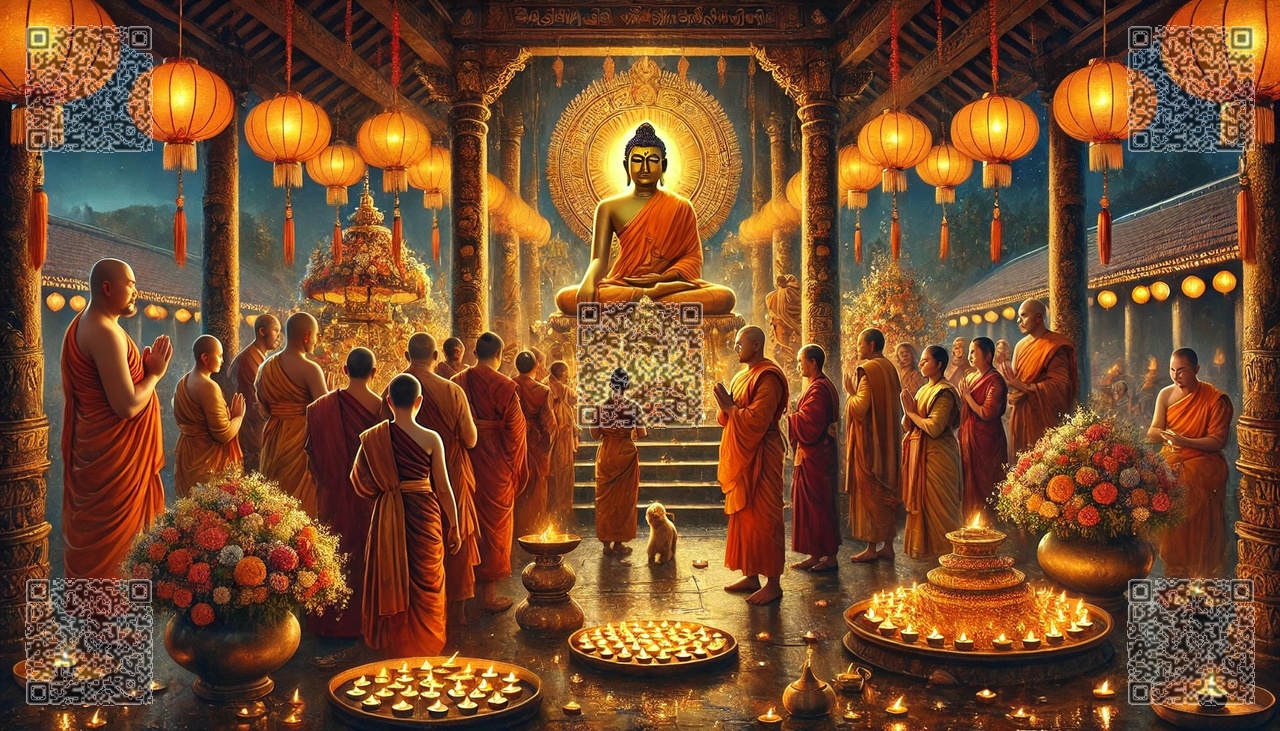Buddhist tradition of the Ezhavas

Since ancient times, Kerala and India’s neighboring country, Sri Lanka (formerly known as Ceylon), have maintained close cultural and commercial relations, as well as friendship. As a result, the Kerala culture, beliefs, customs, and rituals vividly mirror Ceylon’s beliefs of the time. The most important thing to take into account is the similarities in traditions between these two regions. It is not difficult to detect the influence of Buddhist ideas prevalent in Ceylon at the time on Kerala culture. Before the Chaturvarnya system and untouchability developed in Kerala, people lived in brotherhood due to the influence of Buddhist teachings. Buddhist scholars and disciples who visited Kerala from Sri Lanka had a significant impact on the development of Kerala culture. Those were beautiful times when people were together because “all human beings were the same regardless of religion.” Buddhism was very popular in Kerala until the 12th century, when Hinduism experienced a renaissance. Historical scholars and archaeologists believe that Buddhism had a greater influence in southern Kerala than in northern Kerala. Kayamkulam (formerly Onattukara) was a well-known Buddhist center, and Alummoottil® family hails from this region. Its remains can still be found as historical relics in various regions related to Onattukara. The Buddha statues found in Mavelikkara, Karunagappalli, and Karumadi localities are prime instances of this. Back then, the Buddhist temple was known as Boudhapalli. Kodungalloor Temple, Shabarimala Temple, and Thrikunnapuzha Shasta Temple were all Buddhist temples. Then, in the 12th century, with the arrival of the Brahmins, the renaissance of Hinduism in Kerala became a big challenge to the rise of Buddhism that had existed until then. With the introduction of the Brahmins, Hinduism was raised to the status of a ‘Vedic’ religion over which they exerted influence, attracting the majority of Buddhist followers at the time.However, there was a group of people who were not tempted by these changes and refused to join Hinduism.This population, including Ezhavas, was relegated to the backward class. Those who first adopted the new Vedic religion became Nairs, and those who joined later were marginalized as backward sections of society. Conservatives who refused to obey the Brahmin society were banished.When we examine the history of Aryans, it is very clear that Brahmins, Nairs, and Ezhavas were all one community and were divided by religious beliefs. The Tarisapalli edict states that the Ezhavas were farmers who followed Buddhism.

ഈഴവരുടെ ബുദ്ധമത പാരമ്പര്യം

വളരെ പുരാതന കാലം തൊട്ടു തന്നെ കേരളവും ഇന്നത്തെ ഭാരത്തിന്റെ അയൽ രാജ്യവുമായ ശ്രീലങ്ക (അന്ന് സിലോൺ എന്നറിയപ്പെട്ടിരുന്നു) യുമായി സാംസ്കാരികപരമായും വാണിജ്യപരമായും വളരെയടുത്ത ബന്ധവും സൗഹൃദവും നിലനിർത്തിപോന്നിരുന്നു .ആയതുകൊണ്ട് തന്നെ കേരളീയ സംസ്കാരത്തിലും വിശ്വാസങ്ങളിലും ആചാരങ്ങളിലും അനുഷ്ടാനങ്ങളിലും അന്നത്തെ സിലോൺ വിശ്വാസങ്ങളുടെ പ്രതിഫലനം പ്രകടമായിത്തന്നെ കാണാൻ സാധിക്കുന്നതാണ് .അതിൽ ഏറ്റവും പ്രധാനമായി എടുത്തു പറയേണ്ടുന്നത് ഈ രണ്ടു പ്രദേശങ്ങളും പരസ്പരം കൈമാറി പിന്തുടർന്ന് വന്നിരുന്ന പാരമ്പര്യങ്ങളിലെ സാമ്യതയാണ് .ഒരു കാലഘട്ടത്തിൽ സിലോണിൽ വീശിയടിച്ച ബുദ്ധമതാശയങ്ങളുടെ ഒരു പ്രകമ്പനം കേരളീയ സംസ്കാരത്തിലും എടുത്തുകാണുവാൻ സാധിക്കുന്നതാണ് .ചാതുർവർണ്യവ്യവസ്ഥയും അതിന്റെ ഭാഗമായ അയിത്തവും കേരളത്തിൽ വരുന്നതിനു മുൻപ് തന്നെ ഇവിടെ മനുഷ്യർ സഹോദരങ്ങളെ പോലെ തോളോട് തോൾ ചേർന്ന് കഴിഞ്ഞിരുന്നത് ബുദ്ധമതാശയങ്ങൾ അവരിലുണ്ടാക്കിയ സ്വാധീനത്തിന്റെ ഫലമായിട്ടാണ് .ശ്രീ ലങ്കയിൽ നിന്നും കേരളം സന്ദർശിച്ച ബുദ്ധമത പണ്ഡിതന്മാരും ഭിക്ഷുക്കളും കേരളീയ സംസ്കാരത്തെ പാകപ്പെടുത്തുന്നതിൽ നിർണായകമായ സ്വാധീനം ചെലുത്തിട്ടുണ്ട് . “മതമേതുമില്ലാതെ മാനുഷ്യരെല്ലാരും ഒന്നു പോലെ “എന്ന രീതിയിൽ ജനങ്ങൾ ഒന്നായി കഴിഞ്ഞിരുന്ന സൗഭാഗ്യത്തിന്റെ നാളുകളായിരുന്നു അത്.12-ആം നൂറ്റാണ്ടിനോട് അനുബന്ധിച്ചു ഹിന്ദു മതത്തിലുണ്ടായ നവോത്ഥാനകാലം വരെ ബുദ്ധമതത്തിനു കേരളമണ്ണിൽ വലിയ സ്ഥാനമാണ് ഉണ്ടായിരുന്നത്. ചരിത്ര ഗവേഷകരുടെയും പുരാവസ്തു ഗവേഷകരുടെയും അഭിപ്രായം മാനിയ്ക്കുകയാണ് എങ്കിൽ ,വടക്കൻ കേരളത്തിലേക്കാളുപരി തെക്കൻ കേരളത്തിലായിരുന്നു ബുദ്ധമത സ്വാധീനം കൂടുതലായി കാണപ്പെട്ടിരുന്നത് .ഇന്നത്തെ കായംകുളം (അന്ന് ഓണാട്ടുകര എന്നറിയപ്പെട്ടിരുന്നു) പ്രശസ്തമായ ഒരു ബുദ്ധമത കേന്ദ്രമായിരുന്നു.ഇതിന്റെ മാറ്റൊലി ഓണാട്ടുകരയുമായി ബന്ധപ്പെട്ടു കിടന്നിരുന്ന മറ്റു പ്രദേശങ്ങളിലും ചരിത്രാവശേഷിപ്പുകളായി ഇപ്പോഴും കാണാവുന്നതാണ് .മാവേലിക്കര ,കരുനാഗപ്പള്ളി ,കരുമാടി എന്നീ പ്രദേശങ്ങളിൽ കണ്ടെത്തിയിരുന്ന ബുദ്ധപ്രതിമകൾ ഇതിന്റെ ഏറ്റവും വലിയ ഉദാഹരണങ്ങൾ ആണ് .ബൗദ്ധപ്പള്ളി എന്നാണ് ബുദ്ധമതവിഹാരം അന്നത്തെ കാലത്തു അറിയപ്പെട്ടിരുന്നത്.കൊടുങ്ങല്ലൂർ ക്ഷേത്രവും ശബരിമല ക്ഷേത്രവും തൃക്കുന്നപ്പുഴയിലെ ശാസ്താക്ഷേത്രവും ഒക്കെ തന്നെ ബുദ്ധക്ഷേത്രങ്ങളായിരുന്നു .തുടർന്ന് 12-ആം നൂറ്റാണ്ടിനോട് അനുബന്ധിച്ചു ബ്രാഹ്മണരുടെ ആഗമനത്തോടെ കേരളത്തിൽ ഹിന്ദു മതത്തിലുണ്ടായ നവോത്ഥാനം അതുവരെ നിലവിലുണ്ടായിരുന്ന ബുദ്ധമതത്തിന്റെ വളർച്ചയ്ക്ക് വലിയൊരു വെല്ലുവിളിയായി .ബ്രാഹ്മണരുടെ ആഗമനത്തോടെ ഹിന്ദുമതത്തിനെ അവർക്കു സ്വാധീനം ഉണ്ടായിരുന്ന ഒരു ‘വൈദിക’ മതം എന്ന തലത്തിലേയ്ക്ക് ഉയർത്തുകയും തുടർന്ന് അക്കാലത്തെ ബുദ്ധമത വിശ്വാസികളിൽ ഭൂരിഭാഗത്തേയും ഈ മതത്തിലേക്ക് ആകർഷിക്കുകയും ചെയ്തു .എന്നിരുന്നാലും ഈ മാറ്റങ്ങളിൽ പ്രലോഭിതരാകാതെ ഹിന്ദുമതത്തിൽച്ചേരാൻ വിസമ്മതിച്ചു നിന്ന ഒരു പറ്റം ജനവിഭാഗം തന്നെ ഉണ്ടായിരുന്നു .ഈ ജനസമൂഹമാണ് ഈഴവർ മുതൽ ഉള്ള മറ്റു ജാതിയിൽപ്പെട്ടവർ ആയതു .നവീന വൈദിക മതത്തിലേക്ക് ആദ്യം കടന്നുചെന്നവർ നായന്മാരായി പിന്നീട് ചേർന്നവർ സമൂഹത്തിന്റെ പിന്നോക്കവിഭാഗങ്ങളായി പാർശ്വവൽക്കരിയ്ക്കപ്പെട്ടു .ബ്രാഹ്മണ സമൂഹത്തെ അനുസരിക്കാതിരുന്ന യാഥാസ്ഥിതികരും ബുദ്ധമത വിശ്വാസികളുമായിരുന്ന ഈഴവരും മറ്റു പിന്നോക്ക വിഭാഗങ്ങളും പുറന്തള്ളപ്പെട്ടു.ആര്യന്മാരുടെ ചരിത്രം പരിശോധിക്കുമ്പോൾ നമ്പൂതിരിയും നായരും ഈഴവരും എല്ലാം ഒരേ സമൂഹം ആയിരുന്നു എന്നും മതവിശ്വാസങ്ങളാൽ വിഭജിക്കപ്പെട്ടതാണെന്നും വളരെ വ്യക്തമാണ്.തരിസാപള്ളി ശാസനത്തില് ഈഴവര് ബുദ്ധമത അനുയായികള് ആയ കൃഷിക്കാർ ആയിരുന്നു എന്ന് പറയുന്നുണ്ട്.



